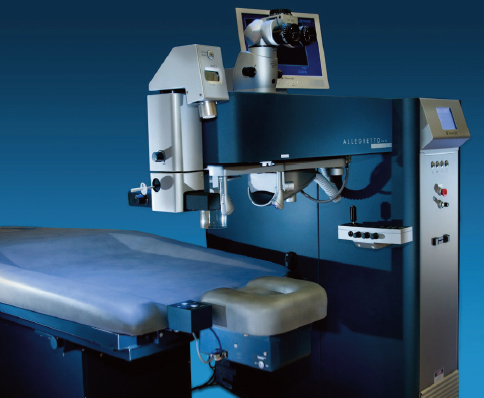Excellent Visual Acuity

The WaveLight® Allegretto Wave® Eye-Q Lasers are designed to work with each patient’s individual prescription and cornea while aiming to improve what nature originally designed. The proprietary Wavefront Optimized® treatment considers the unique curvature of the eye, preserving quality of vision and addressing the spherical distortions that may induce glare and affect night vision.
The Principle Behind Wavefront Optimized® Treatments
The natural shape of the human cornea is aspheric. This means that all light rays meet in one sharp focus point.
Therefore the laser systems perform an ablation with the objective to maintain a natural postoperative corneal shape and thus to preserve the cornea’s asphericity.
By taking the K-readings into consideration, each treatment is adapted to the patient’s individual refraction and corneal curvature.
Understanding Spherical Aberrations:
Spherical aberrations manifest at ingoing light rays in the periphery. Wavefront Optimized® treatment profiles keep the natural asphericity of the cornea, hence all ingoing light rays meet in one point. Non-aspheric ablations change the corneal asphericity, and the light rays from the periphery are focused in different points which may lead to a slightly blurry image and night vision disturbances.
Aspheric Shape, Minimized Spherical Aberrations
Induced Spherical Aberrations
Spot Energy of Laser Beam
Due to the angle of incidence, the light of the laser beam is ovalized increasingly toward the periphery and becomes partially reflected, which results in less fluence and thus sub-optimal ablation.
Wavefront Optimized® Ablation Profile
Wavefront Optimized® LASIK places more pulses in the peripheral area to compensate for energy loss and reflections. This provides a nearly 100% optical zone and a minimized transition zone. At the same time, the natural aspheric shape of the cornea is preserved and the induction of spherical aberrations minimized.
Without Wavefront Optimized® Ablation Profiles
In these treatments the decreasing fluence and reflections are not compensated and the ablation depth in the peripheral area is insufficient. As a result, the transition between the optical zone and the transition zone is less smooth, while the transition zone itself is fairly large. The non-aspheric ablation profile alters the natural corneal shape and induces spherical aberrations.
